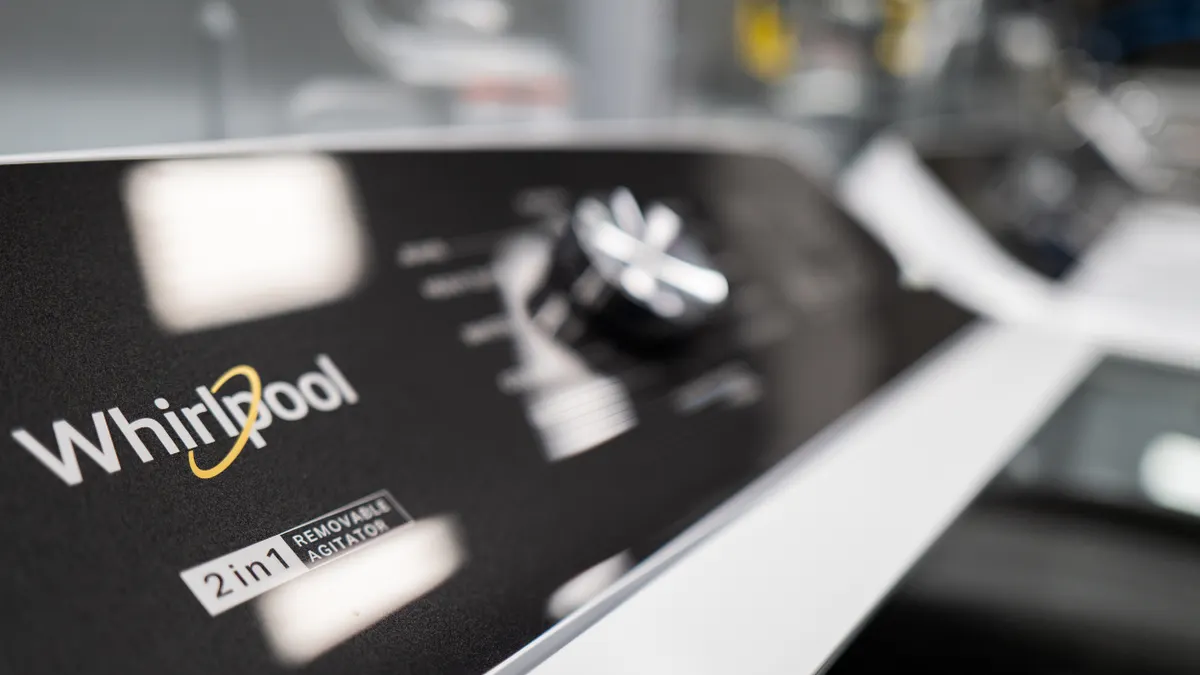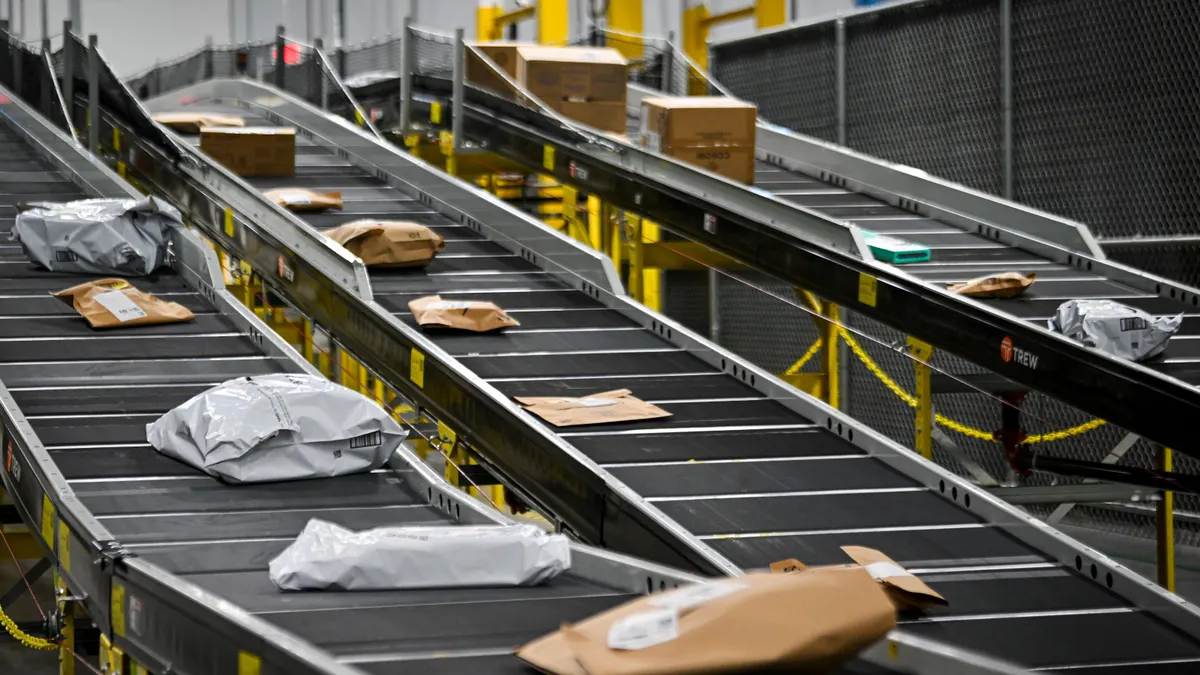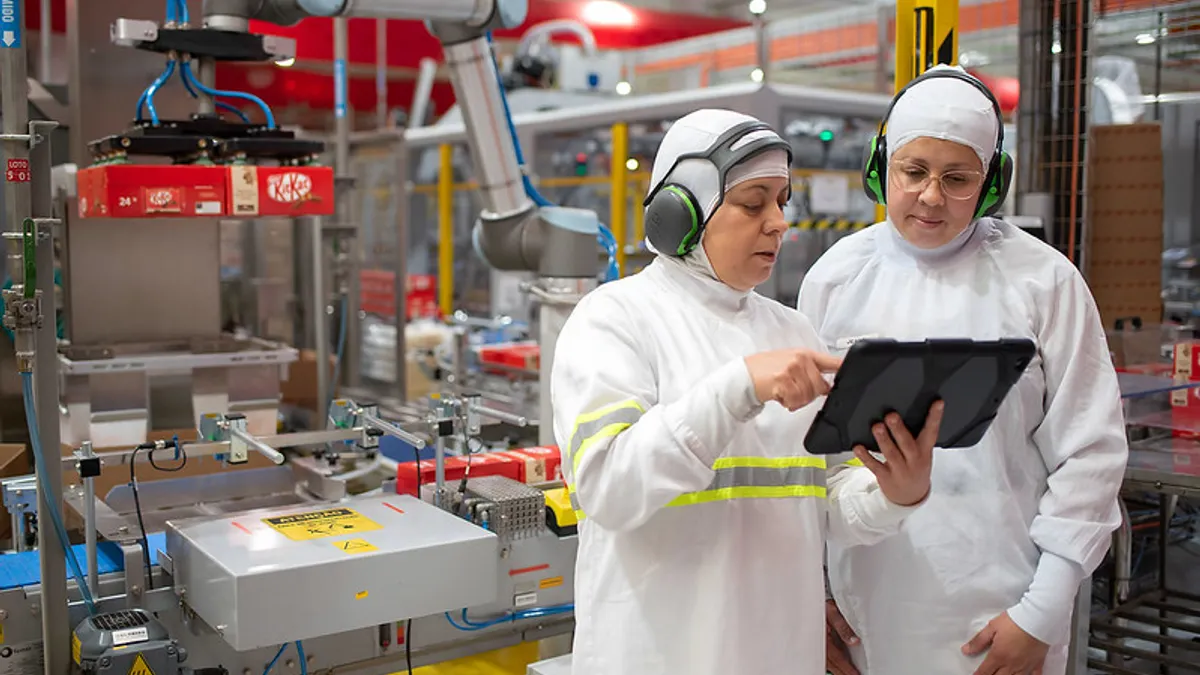Dive Brief:
- Whirlpool’s margins took a hit in the most recent quarter as competitors brought in imports from Asia before tariffs took effect and “flood[ed] the market with lower cost inventory,” Whirlpool CEO Marc Bitzer said during the company’s Q3 earnings call Tuesday.
- In Q3, the manufacturer incurred $100 million in costs due to tariffs, mostly on imported components rather than finished goods. Whirlpool expects tariff costs of $225 million this year, assuming the duties remain in place at current levels. “That is, of course, a big assumption, because, as we all experienced, there’s a lot of moving pieces,” Bitzer said.
- Despite tariff impacts, Whirlpool was able to grow net sales by 1% to about $4 billion for the quarter. Executives credited this to double-digit sales growth in the KitchenAid Small Domestic Appliance Business and market share gains in major appliances amid new product launches.
Dive Insight:
Tariffs have been a headwind for Whirlpool, despite the manufacturer’s significant domestic footprint. But executives expect the tides to turn as competitors draw down their frontloaded inventory and face greater exposure to tariffs. Ultimately, Bitzer predicted, Whirlpool will emerge as a “net winner” of new tariff and trade policies.
Bitzer said he wasn’t surprised to see Whirlpool’s competitors preload inventories ahead of tariffs, but “it lasted longer than we anticipated.” In fact, appliance imports from Asia during the first half of the year were nearly the highest on record, according to Bitzer.
Competitors’ frontloading drove Whirlpool to do more promotions to stay competitive, which negatively affected price and mix, according to Chief Financial and Administrative Officer Jim Peters. During Q3, tariffs dented Whirlpool’s margins by 250 basis points and gross margin fell $49 million year over year.
“There’s quite a bit of inventory overhang,” Bitzer said. “That excess inventory at some point will flush through the system.”
Whirlpool is beginning to see signs of slowing imports in the appliance sector. Ocean freight rates have been falling rapidly, according to Bitzer, which indicates decreased demand for ocean containers. Imports are also declining after a peak in July, the chief executive added. At the Port of Los Angeles, for one, volumes dropped 7.5% YoY in September after falling 0.2% in August.
As competitors work through their inventory, they’ll face higher costs to import finished goods into the U.S. due to tariffs taking effect. As of Oct. 5, imported appliances are subject to reciprocal tariffs as well as Section 232 tariffs, which include duties on steel and aluminum, Bitzer said.
Whirlpool, on the other hand, builds about eight in 10 appliances it sells in the U.S. domestically, using components sourced both within the country and internationally. Plus, 96% of the steel it uses across its portfolio of brands, which also include KitchenAid and Maytag, is sourced within the U.S.
The manufacturer has doubled down on its U.S. manufacturing commitment, announcing plans this month to invest $300 million in two of its laundry manufacturing facilities in Ohio. Bitzer said the company sees “very attractive returns” from investing in U.S. manufacturing and domestically built products, further supported by tariffs on foreign imports.
“As a domestic producer with more than 80% local production, we will have a clear relative advantage over our competitors,” Bitzer said.
Whirlpool anticipates a 3% annual cost increase, while its competitors are expected to see cost increases ranging from 5% to 15% depending on their footprint, Bitzer said. Next year, Whirlpool’s tariff costs will “probably be in the ballpark of $300 to $350 million,” the CEO said.
In addition to eventually coming out ahead of competitors on the tariff front, Whirlpool also expects benefits from a record number of new product launches in North America along with an overdue recovery of the housing market, likely in 2026 or 2027.
More than 30% of the company’s North America’s product portfolio is transitioning with new products this year — its largest number of new product launches in more than a decade. Discretionary and premium products have been hit the hardest by consumer spending changes and a sluggish housing market, Peters noted. As mortgage interest rates come down and the housing market recovers, products in this category, such as KitchenAid mixers and accessories, stand to benefit.
“We're exceptionally well positioned to win in the eventual housing recovery,” Bitzer said.
















